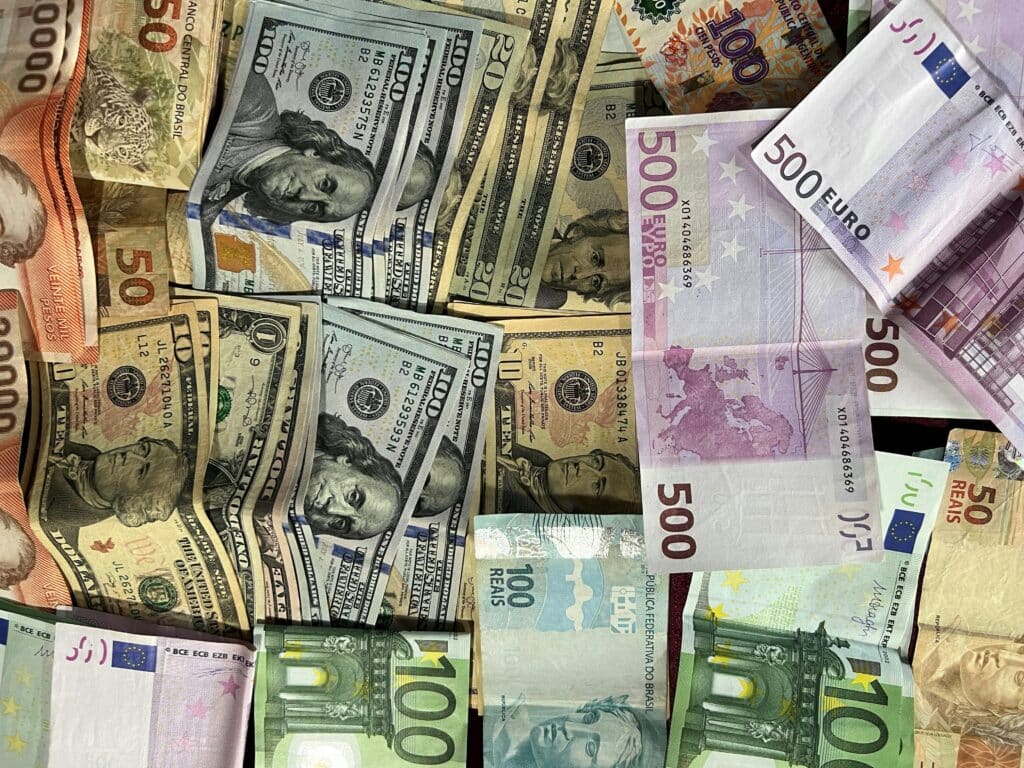
Currency symbols are a familiar sight in daily life, appearing on banknotes, price tags, and digital transactions. For users of services like Remitly, who send money home in various currencies – from the pound to the dirham – these symbols represent much more than monetary value. They are lifelines connecting families and communities around the world.
Let’s uncover the hidden meanings behind some of the most recognisable currency symbols, such as £, €, and $, along with lesser-known ones, their origins, and the vital role they play in the global economy.
Understanding Currency Symbols: A Guide
Currency symbols provide a shorthand way of representing a particular currency, making it easier to identify and differentiate between monetary units. These symbols often derive from the currency’s name or incorporate elements reflecting the culture or region it represents. Understanding currency symbols is crucial for those engaged in international commerce, travel, or financial transactions.
Send and Receive Money Internationally in the UK with Remitly.
Get started with our free mobile app.
Download
The Story Behind £: British Currency
The pound sterling (£) is one of the oldest continuously used currency symbols in the world. Its origins lie in the Latin word libra, meaning weight or balance. The symbol £ comes from the letter “L” in libra and has been associated with the British pound since the 17th century. Deeply embedded in British culture, the £ symbol is a source of national pride and represents the United Kingdom’s enduring influence in the global financial system.

Exploring the Origins of the € Symbol
The euro (€) symbol represents the single currency adopted by many European Union (EU) countries. Designed by Belgian graphic designer Alain Billiet, it incorporates the letter “E” for Europe and two parallel lines symbolising stability. Introduced in 1999, the euro has become a cornerstone of European identity, facilitating trade and travel across the continent.

The Evolution of $: The Dollar’s Journey
One of the most recognisable currency symbols worldwide, the dollar sign ($) traces its origins to the Spanish dollar. Historical evidence suggests it evolved from the abbreviation “P” and “S” for pesos. Today, the $ symbol is used by several nations, including the United States, Canada, Australia, and many Latin American countries. It is strongly associated with American economic influence.

Unveiling the Hidden Meanings of ¢, ¥, and ₽
- The cent symbol (¢) represents smaller denominations and originates from the Latin word centum (hundred).
- The yen (¥), Japan’s currency, derives from the kanji character “円” (yen), meaning “circle” or “round”.
- The Russian ruble (₽) symbol uses the Cyrillic letter “Р” for “ruble,” representing its linguistic roots.

The Rupee, the Real, and More
Currency symbols often reflect the culture and history of their nations. For example:
- The Indian rupee (₹) blends the Devanagari script with the Roman “R”.
- The Turkish lira (₺) symbol incorporates “T” and “L,” marking its connection to Turkey’s heritage.
- The South African rand (R) comes from “ZAR,” representing Zuid-Afrikaanse Rand.
Even lesser-known symbols like the Vietnamese dong (₫) or Brazilian real (R$) carry unique stories tied to their regions.

A List of Commonly Used Currency Symbols
Here’s a list of commonly used currency symbols:
| Currency | Symbol |
|---|---|
| British Pound (GBP) | £ |
| Euro (EUR) | € |
| US Dollar (USD) | $ |
| Japanese Yen (JPY) | ¥ |
| Indian Rupee (INR) | ₹ |
| Canadian Dollar (CAD) | C$ |
| Australian Dollar (AUD) | A$ |
| Swiss Franc (CHF) | CHF |
| South African Rand (ZAR) | R |
| Turkish Lira (TRY) | ₺ |
Currency Symbols in the Global Economy
Currency symbols are essential for global trade, travel, and investment. They represent a nation’s economy and often its identity. For example, the £ symbol signifies the UK’s financial legacy, while the € reflects Europe’s unity. These symbols bridge cultural and economic gaps, enabling seamless cross-border transactions. They remind us that behind every financial exchange lies a history of national pride, identity, and aspiration.
Understanding currency symbols enriches our appreciation of global cultures and economies. So next time you encounter one, remember it signifies more than just money – it embodies a nation’s story.
FAQs About Currency Symbols and Their Meaning
What are currency symbols?
Currency symbols are shorthand representations of specific currencies, making it easy to identify and differentiate between monetary units in financial transactions.
Why is the pound symbol (£) used for British currency?
The pound symbol (£) originates from the Latin word libra, meaning weight or balance. It has represented the British pound since the 17th century.
How was the dollar sign ($) created?
The dollar sign ($) evolved from the Spanish dollar, possibly as a combination of the letters “P” and “S” from the word pesos. It is now used by many countries, including the United States and Canada.
What does the euro (€) symbol represent?
The euro (€) symbol combines the letter “E” for Europe and two parallel lines, symbolising stability. It reflects the European Union’s unity and shared currency.
Are currency symbols universal?
While some symbols like $, £, and € are widely recognised, others are specific to their regions, such as the Indian rupee (₹) and the Japanese yen (¥).
Why do currency symbols matter in the global economy?
Currency symbols facilitate international trade, travel, and investment by providing a universal representation of monetary values, ensuring smoother transactions across borders.
What are some examples of lesser-known currency symbols?
Lesser-known symbols include the Vietnamese dong (₫), South African rand (R), and Turkish lira (₺), each reflecting their unique cultural and historical contexts.
How do currency symbols reflect a country’s identity?
Many currency symbols incorporate elements of a country’s language, history, or culture, serving as visual representations of national pride and economic identity.
